When you think of a funnel, what comes to mind? For me, it’s a funnel to put oil in a car. You use it so you don’t lose or spill any oil.
An ecommerce marketing funnel is nothing like this.
Using the word “funnel” is just a bad analogy. It makes you think that with a proper funnel, everything you put in the funnel (i.e. traffic) will make it through without losing anything. Our funnel is shredded. It has holes.
Sort of like this:
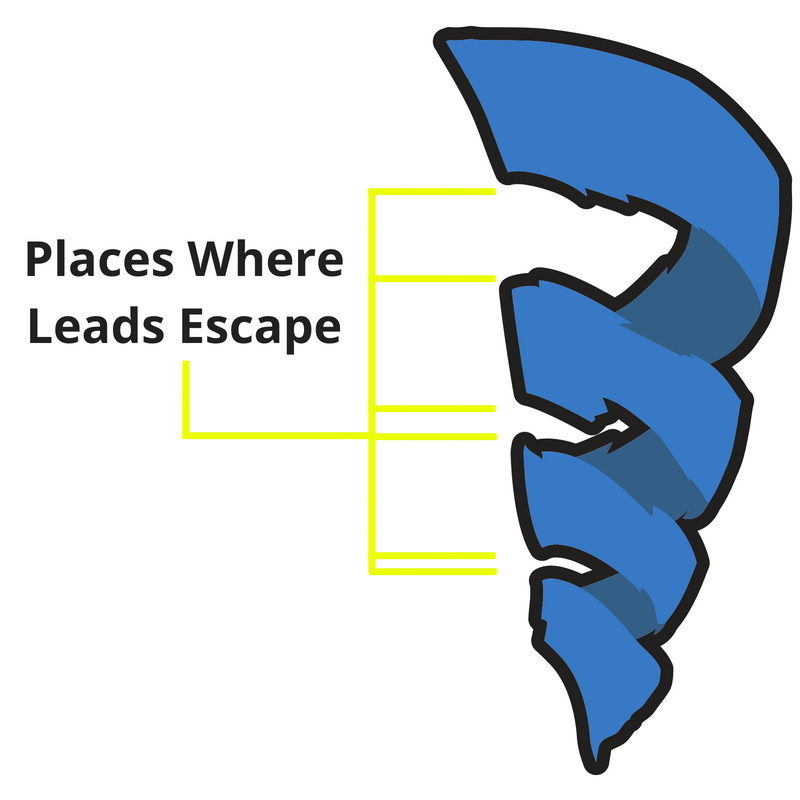
But that’s not to say they aren’t helpful! A good funnel can make people aware of your business, and turn them into repeat customers. Let’s dive in!
%(tableofcontents)
Overview: What An Ecommerce Marketing Funnel Really Looks Like
An image is worth a thousand words — so here you go!

In an ideal world, everyone in your target market would become aware of your site, consider your products, decide to buy, and take action on a purchase — then continue to buy again and again.
While that’s obviously not possible, you can certainly improve the smaller steps within each stage to increase your conversion rate. And that’s our goal today.
It starts with people being aware of your existence.
The Awareness Stage

Buyers in this stage: Interact with your social media content, perhaps visit your website.
Who’s in this stage? Anyone who just visited your website for the first time while doing research or by chance. For example, people who found you via Google or social media.
Basically, these are people who have shown an interest in what you have to offer, but aren’t familiar with your brand at all. In fact, people in the awareness stage likely don’t even know what their problem is or that they have a problem at all.
Your Job: Educate and Build Your Visitors’ Trust
You can do that with epic blog content and helpful social media posts — especially videos. Where both video and text are available on the same page, 72% of people in one survey would rather use video to learn about a product or service.[*]
One great example of awareness stage content is Mr Porter. They’re a clothing and designer goods site, and their blog has great educational content like “The DIY Tips Every Man Should Know”.[*]

This kind of content introduces the brand to its visitors by helping them learn how to save money and do jobs (basic plumbing, rewiring, etc.) themselves. There’s no hard sell.
However, they do bring it full circle and offer men’s work clothes at the end of the article (see below), helping them to gently push visitors through the funnel.

Another great example — this time in the form of video content — is ASDA, an online grocery and clothing store. They created a YouTube channel called Mum’s Eye View, where they share food, beauty, fashion and lifestyle tips for moms.[*]
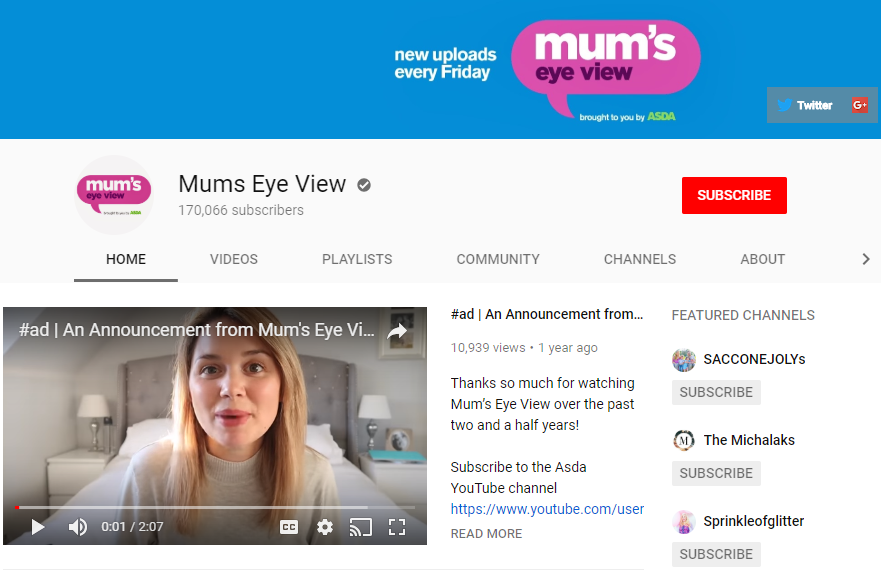
Most of their videos fall in the awareness stage — that is, they give advice and information to their target market without trying to make a hard sell.
Note: They stopped updating their YouTube channel about a year ago. I suspect this is because their content focused too much on awareness stage content, and thus didn’t drive enough sales to warrant the expense. But it could be because they changed ad agencies.
Finally, I’ll leave you with a visualization of how this stage might work:

Or, in the case of YouTube videos:

Action Item: Create Informational Content
So now that you know what this stage of the funnel is, it’s time to create informational content targeting the people in this stage. You can do this through blog content, a YouTube channel, or other social media.
Personally, I recommend using blog content, since it has the added benefit of being able to rank on search engines for more consistent, higher-qualified traffic.
First, do some keyword research to see what people are searching for. You can do this by searching keywords you think people might be searching for, then looking at the “people also search for” section.

Pro tip: Notice the searches/mo and dollar amount next to the search phrases? I can see that using a browser extension called Keywords Everywhere. It can also show you more related searches on the sidebar (see screenshot below).[*]

Once you’ve found a solid keyword — for example “What to wear on a hike and still look cute” — write an article or create a video focused on answering that search query. Rinse and repeat until you have a solid repertoire of awareness-focused content.
The Interest Stage

Buyers in this stage: Are interested in your brand’s story or the pain point you may be solving. They’re “considering” your product.
Who’s in this stage? People who have discovered a need and are still researching the solution. They may have realized they have a problem in your awareness stage content (or in someone else’s), and are now trying to find a solution to that problem.
Some visitors will let you know they’re in this stage by subscribing to your newsletter, downloading your content upgrade, or connecting with you on social media.
Your Job: Make It Easy For Interested Visitors To Connect With You And Learn More About Your Products
Some ways of doing this include:
-
Offering an email newsletter or free course teaching people about your products and the problems or pain points they solve.
-
Creating a content upgrade, such as a free eBook, a product sample, or a checklist to help your visitors solve their problem.
-
Engaging with your followers on social media by messaging them, tagging them, and responding to their comments.
One store that does this extremely well is EVELO. They sell electric bikes and offer multiple ways for interested buyers to learn more, such as an electric bike buyers guide…
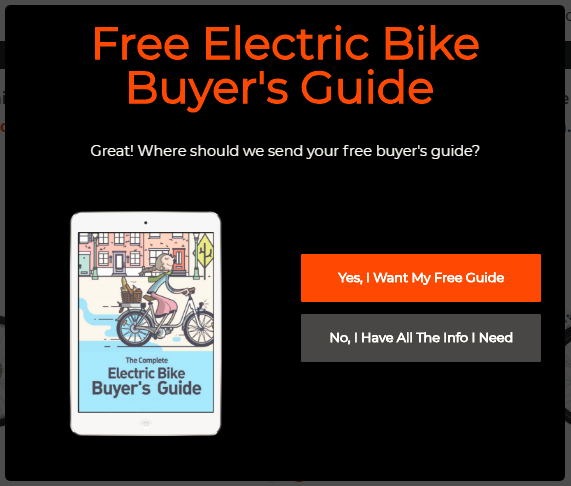
…or through a free online fit consultation to get an instant recommendation:[*]
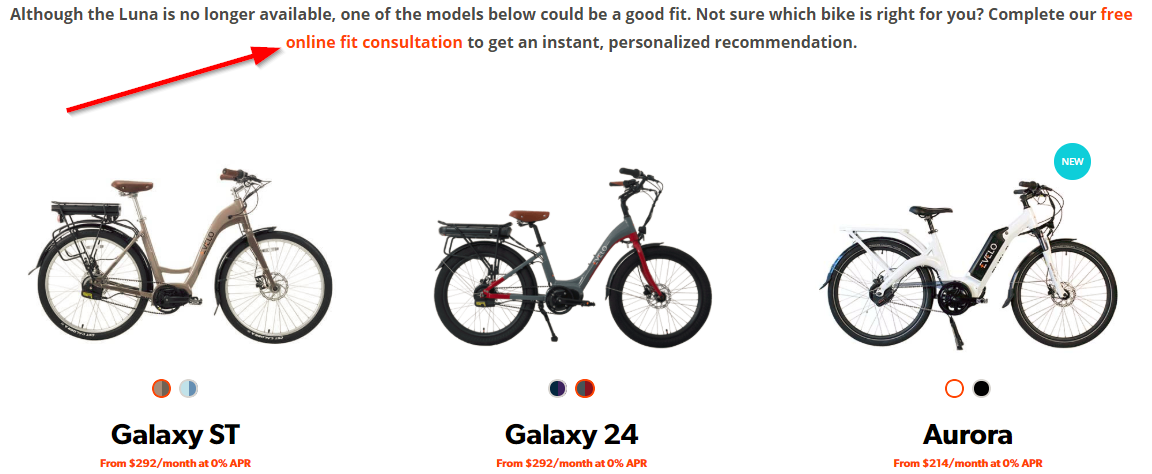
Action Item: Create Your First Content Upgrade
If you’ve been following along, you have some informational content in the works (or at least an idea to create some in the future).
Next, you should add your very own content upgrade to your article getting the highest amount of traffic! To do that, check out Google Analytics > Behavior > Site Content > All Pages.

Some content upgrade ideas include:
-
eBook
-
Checklist
-
Worksheet
-
How-to Guide
-
Buyer’s Guide
-
Spreadsheet
Sticking to our “What to wear on a hike and still look cute” example, I might create a PDF with “cute hiking outfits celebrities wear”. (I’m a dude, cut me some slack!)
To offer a PDF download, you obviously have to make it first. I like to use Google Docs, since it’s easy to collaborate on, free, and can be saved as a PDF.
Once you’ve made your upgrade and saved the PDF, simply upload it to your website. In WordPress, you can add it as a media file. Copy the link to the online version; you’ll need that to send out your upgrade.

Next, we’ll need a popup. The Sumo app has built-in popup feature you can use to create a popup for your new upgrade. Install the app or plugin on your WordPress, Shopify or WooCommerce site, go to the settings, enable the popup, and create your first one.

Note: Make sure you set it to only open on the page you’ve created the upgrade for (i.e. the cute hiking outfits article).
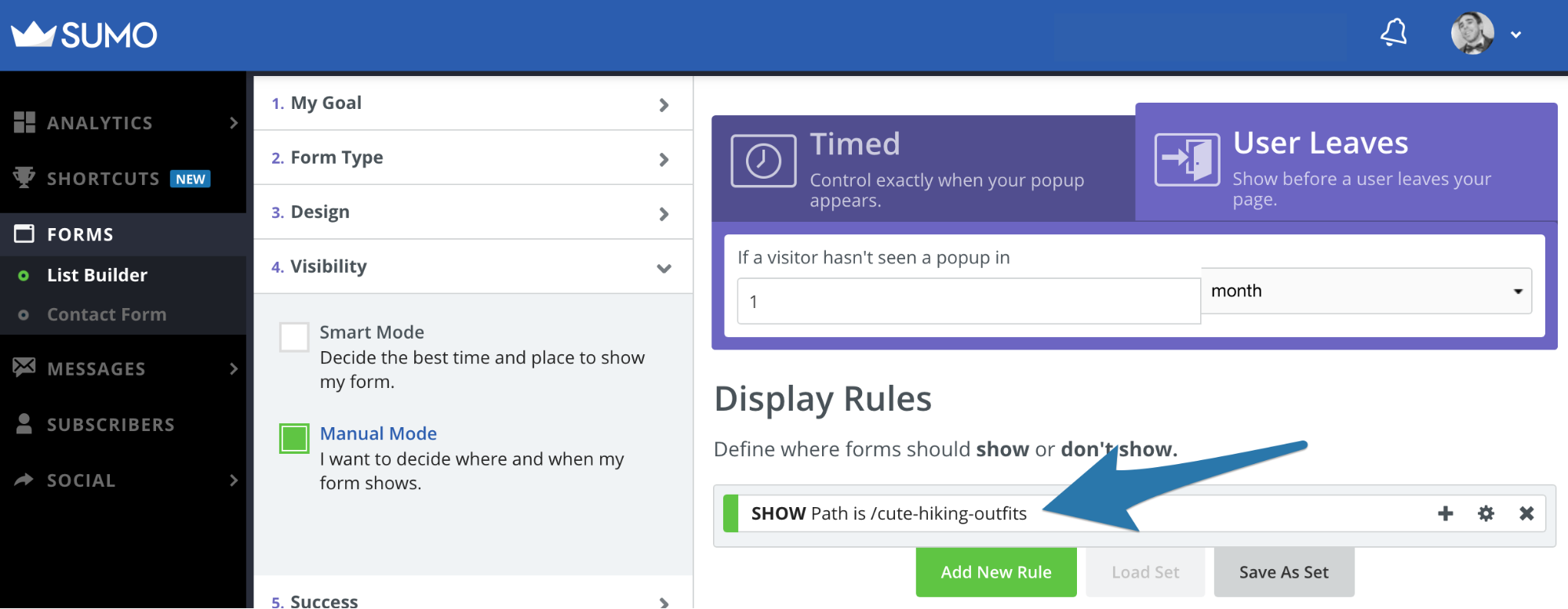
Finally, connect your popup with your email marketing platform. If you don’t have one, you can use Sumo’s email autoresponder to deliver your content upgrade.
Set up an automated email that goes out to anyone who signs up for the upgrade. Make sure it includes the link to the PDF we copied earlier. Then you’re all set!
Pro tip: It’s even better to set up a fully automated lead nurturing campaign. This is a sequence of several emails that go out over a few days, weeks, or months that “nurture” your leads into sales. More on that in a moment.
One more important note — Europe recently released their GDPR law, which affects your site visitors’ privacy. It affects you no matter where your website is located, since chances are, people from Europe will hit your site at some point. It basically requires you to get explicit consent from your lead opt-ins. All Sumo opt-in forms come with a GDPR compliant opt-in box you can add to your forms, so you don’t need to worry.
The Purchase Stage

Buyers in this stage: Are ready to buy, but aren’t sure if you’re the best company to buy from.
Who’s in this stage? Visitors aware of your existence. They have a problem, need, or pain point, and know you’re a candidate to solve it for them. All that’s left is to convince them you’re better in some way than the competition.
There are many ways to do that — better price, better features, better user experience, better product, better service, better selection — the list goes on.
Your Job: Convince Your Visitors You’re Better than Your Competition
We showed you how Amazon do it in this growth study, with their massive selection, Amazon Prime free two-day shipping, rock bottom prices, and excellent customer service. Hard to compete, for sure!
But let’s look at another example — The Honest Company.
The Honest Co. sells healthy, chemical-free cleaning products, beauty products, baby products, and more. And they’re fantastic at getting interested parties to buy.
Here’s how they do it:
First, their product pages have 1) guarantees, 2) trust badges, and 3) awards that all build trust with the potential buyer.[*]

Then they seal the deal with an exit-intent popup that offers $10.95 off your first purchase.

Now it’s over to you!
Action Item: Write Better Product Descriptions and Add a Popup
Figure out what your most popular OR highest-profit products are. Or just pick one you want to increase sales on.
On that page, follow our guide to writing epic product descriptions. While you’re at it, consider adding trust badges and better product photos if yours aren’t great.
After that, add an exit-intent popup with a discount of some kind. It can be a percent discount, a dollar amount, a bundle discount, or even free shipping. You can add an exit-intent popup with the Sumo app you installed in the interest action step above.
The Repeat Customer Stage
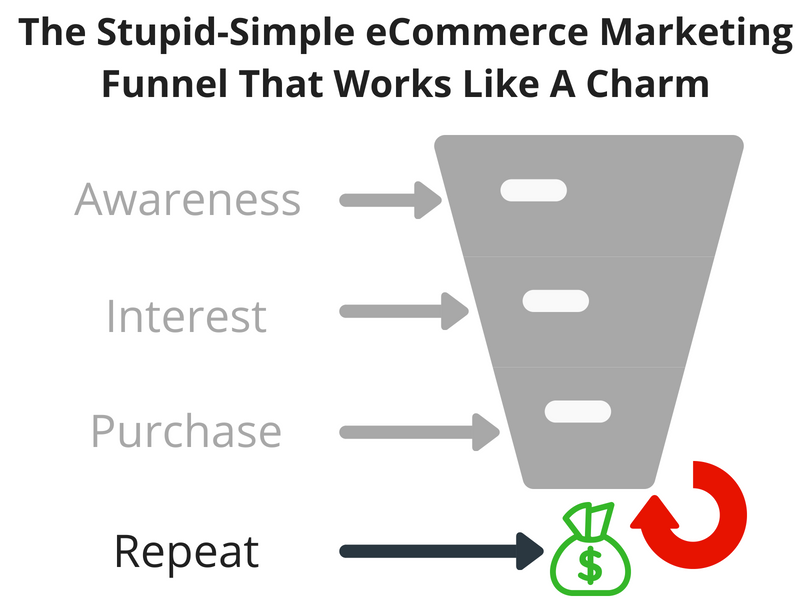
Buyers in this stage: Have already bought from you at least once.
Who’s in this stage? People who have purchased from you before and enjoyed the experience enough to buy again. They are potentially brand advocates who can drive word-of-mouth and referral sales!
This is the stage you want all your customers to get to. Ideally, you want to get your “1,000 true fans” as Kevin Kelly would put it. The 1,000 (or more) people who shout your name to the rooftops.[*]
Your Job: Give Your Loyal Customers the Best Experience Possible
Think: Loyalty programs, featuring your best customers on social media, referral programs, etc.
One of my favorite examples of this is Sephora’s Beauty Insider program.[*]

Their most loyal customers get a private hotline and invitations to exclusive events. Not only does that entice their visitors to reach that $1,000 per year mark, it also reinforces that behavior with the people who consistently manage to reach it and attend the events.
Sephora is making their customers feel extremely important — almost VIP status. They know their target market really well.
Action Item: Set Up A Loyalty Program
If you don’t already have a loyalty program set up, go ahead and create one now. Here are a few apps and plugins to make this easy:
-
Shopify: Bold Commerce Loyalty Points or Smile.io
-
BigCommerce: S Loyalty or Collect Loyalty
-
WooCommerce: LoyaltyDog or WooRewards
-
Magento: Amasty Loyalty Program or Extendware Loyalty Program
Once you’ve installed an app, here are a few tips to get the most out of it:
-
Tailor your program to your customers. Send out a survey email asking them what they’d want from a loyalty program, or give them a few options to choose from. You can do this with Google Forms.
-
Once it’s live, promote it everywhere you can. Add it to your transactional emails, on your website, and send out an email blast.
-
Consider starting your customers off with some points. It will be a nice surprise for them, and will get the ball rolling on the program. Plus, it’s proven that more people complete “incomplete” tasks when they’ve made progress, even if it’s artificial progress.[*]
And that’s all there is to it! If you’re looking to do more to encourage repeat purchases, you can also try starting a referral program, upping your customer service game, and adding free samples in your product packaging, just to name a few strategies.
A Full-Circle, Real-Life Example
Now that you understand the full ecommerce marketing funnel, let’s look at an example of a site who uses this entire funnel in their marketing strategy:
The Honest Company.
Starting at the awareness stage, they have a very strong blog that informs their readers about health, wellness, and lifestyle topics. For example, one of their posts is about why they don’t use fragrance in their products (and the health problems artificial fragrance causes).
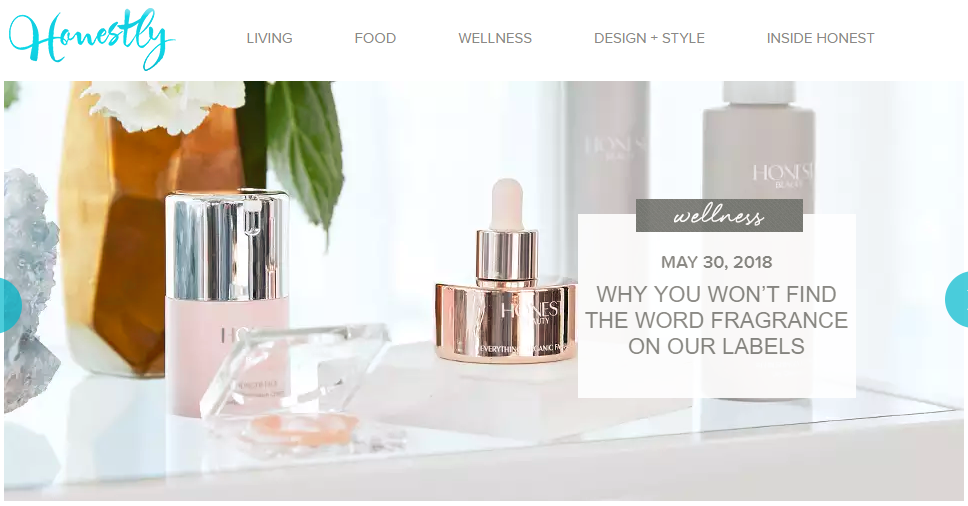
This blog helps them show up in search results for search terms like “diy lip scrub”, “potassium sorbate”, and “homemade bubble wands”, builds trust with their readers, and pushes their site visitors further down the funnel (such as by getting them on their newsletter or promoting their products).
Then, to drive interest, they offer free trials of their products in the sidebar of their blog content, and on their homepage…

They also created a powerful about page for people going through their funnel who are interested in learning more about who they are. The about page shares their story, puts faces behind the company, and gets readers excited about their mission.

They also have a very active social presence, which helps with word-of-mouth and creates a potential remarketing audience.
When it comes to the purchase stage, they have excellent product bundles that allow people to save money, great product photography, and free shipping on all orders over $50. They also use their guarantees and company mission (honest products with no harmful chemicals) to prove they’re better than the competition.
%(image7)
Finally, to achieve repeat sales and loyal customers, they have:
-
Monthly bundle subscriptions so their customers don’t need to think about reordering.
-
A referral program where you get $20 any time you get someone new to Honest to make their first purchase.
-
Volunteer programs and donations to get their customers to feel like they’re helping a good cause by buying Honest products.
It’s easy to see why this company grew to its current state. They have a very strong mission and vision, great products, and adhere to almost all the ecommerce best practices.
What Did We Learn?
If you want a healthy long-term ecommerce business and plenty of repeat sales, you can’t ignore any stage of the marketing funnel.
You need awareness-driving content, interest-driving offers, conversion-focused product pages, and repeat purchase loyalty programs.
If you implement all four action items in this article, you’ll have something for every stage! To get a free swipe file of real-life ecommerce marketing funnels with visualizations for every stage of the funnel, click on the button below.
Ecommerce Marketing Funnel Swipe File
Related Articles
%(relatedarticles)
Add A Comment
VIEW THE COMMENTS